 Ronald Aug . March 20
Ronald Aug . March 20
Collaborations And Networking
Building and Maintaining Collaborative Relationships
- Trust and Respect in maintaining rapport
- Empathy A Vital Component for a Sustainable Collaboration
- Building and Maintaining Rapport Actionable Strategies
- Establishing expectations and guidelines
- Measuring Collaboration Success and Feedback Exchange

Communication and Maintaining Rapport
Effective communication is essential for maintaining collaborative relationships with fellow content creators, followers, and industry professionals. An open, honest, and respectful exchange of ideas and feedback can lead to improved content, increased creativity, and strengthened teamwork.
- 80% of YouTubers find that effective communication significantly impacts collaboration results.
- 69% of successful YouTube collaborations are attributed to strong relational communication between creators.
Trust and Respect in maintaining rapport
Trust and respect are crucial components of any successful collaborative relationship, especially on YouTube where content creators often share personal moments and open themselves up to criticism.
-
YouTube Collabs: Explore how popular YouTubers disclose their collaborations, showing mutual respect and trust by acknowledging each other's contributions.
-
Do: Be open to constructive feedback from your collaborators, audience, and industry professionals, and apply it to improve your content.
-
Don't: Badmouth or undermine your collaborators in the comments section or social media.
Empathy A Vital Component for a Sustainable Collaboration
Empathy is the ability to genuinely understand and share the feelings of others. This emotional intelligence plays a crucial role in building and maintaining rapport within a collaborative relationship, as it allows creators to work together more harmoniously and understand the needs and emotions of their audience.
Strategies for Developing Empathy
- Practice Active Listening: Engage in truly hearing what your collaborators, audience members, and industry professionals have to say, without simply waiting for your turn to speak.
- Put Yourself in Their Shoes: Imagine yourself in the other person's situation to better understand their feelings, thoughts, and emotions.
Building and Maintaining Rapport Actionable Strategies
Here are some actionable strategies to help improve and maintain rapport in your collaborative relationships on YouTube:
- Acknowledge Your Collaborators: Express gratitude and acknowledge the contributions of your collaborators. This can be done in the video description, end screen, or even within the video content itself.
- Engage with Your Audience: Respond to comments on your videos, interact with followers on social media, and make sure to address any questions or concerns promptly.
- Participate in industry-related events and forums: Connect with other YouTube creators through online courses and educational resources or by attending YouTube-related events in your area. This will not only help you expand your network but also keep you updated with the latest trends and best practices in the industry.
By implementing the strategies and insights shared above, you can create a strong foundation for building and maintaining successful collaborative relationships on YouTube. This will lead to not only better content and a more engaged audience but also more opportunities for growth and success in the YouTube community.
Building and Maintaining Collaborative Relationships
Establishing expectations and guidelines
Set clear goals for the collaboration
Before starting any collaboration, it's essential to discuss and establish clear, mutually beneficial goals for all parties involved. Clarity of purpose is necessary to ensure that both partners remain focused and motivated throughout the collaboration. It also helps to measure the success of the collaboration once it's completed.
Define roles and responsibilities
A well-structured collaboration ensures that each collaborator has a clearly defined role and understands their responsibilities. Map out project timelines, milestones, and expectations in advance to prevent potential misunderstandings that could damage the working relationship. This is especially crucial when multiple people or teams are collaborating on a project.
Agree on communication methods and frequency
Effective communication forms the backbone of any successful collaboration. To maintain a healthy working relationship, agree on communication channels and preferred contact methods. Establishing a communication frequency facilitates regular progress updates and helps to build trust among collaborators.
Establish guidelines for intellectual property and credit
Collaborative partnerships can sometimes lead to disputes over intellectual property rights and credit for work contributed. Before embarking on a collaboration, establish guidelines that address ownership, copyrights, and attribution to avoid issues further down the line.
Develop a conflict resolution plan
Disagreements are a natural part of any collaboration. Establish a conflict resolution plan to address potential disputes that arise during the project. Having a dedicated approach to resolving issues prevents them from escalating and helps maintain a positive working relationship among collaborators.
In the chart above, successful collaboration relies on the equal balance of trust, communication, and mutual goals. Each aspect influences the overall effectiveness of the partnership. Building and maintaining strong collaborative relationships are vital for YouTube creators to grow their audience and create engaging content.
- Jenna Marbles and Julien Solomita on The Jenna Julien Podcast
- Rhett and Link on Good Mythical Morning
- The Slow Mo Guys - Gavin Free and Daniel Gruchy collaborating with several other YouTube creators.
-
Do set clear goals and expectations upfront with partners.
-
Do define roles and responsibilities for each person/team.
-
Do establish communication guidelines and preferred channels.
-
Do discuss intellectual property and credit guidelines.
-
Do develop a conflict resolution plan.
-
Don't assume you understand your partner's expectations without discussing them.
-
Don't disrespect your collaborator's time and effort.
-
Don't let communication gaps lead to misunderstandings.
-
Don't take unilateral decisions without consulting collaborators.
Collaboration exposes YouTube creators to new audiences and offers fresh perspectives on content creation. For more resources and tools, check out this list of websites for YouTube creators to stay informed on the latest trends and news in the industry.
Building and Maintaining Collaborative Relationships
Measuring Collaboration Success and Feedback Exchange
Collaboration is crucial to the success of a YouTube channel, as collaborating with other content creators can help your channel grow faster and reach new audiences. The key to successful collaboration is ensuring that both parties benefit from the partnership and are satisfied with the results. This section focuses on measuring the success of a collaboration and exchanging feedback between collaborators.
Key Performance Indicators (KPIs) for Collaboration Success
-
Audience Growth: One of the main goals of a YouTube collaboration is to reach new viewers and increase your subscriber count. Thus, one of the most critical KPIs to measure collaboration success is the growth of your channel's subscribers and viewers.
-
Viewer Engagement: Another crucial KPI is the engagement of your viewers, which can be measured through comments, likes, shares, and watch time. High engagement levels indicate that your collaboration has produced content that resonates with your audience, leading to higher viewer satisfaction and improved channel metrics.
-
Retention Rate: Collaborations should not only attract new viewers but also retain them. A high retention rate indicates that your collaboration is successful in capturing the interest of viewers and encouraging them to watch more of your content.
To learn more about retention rates, check out our article on viewer retention tactics.
-
CTR (Click-through Rate): The success of a collaboration can also be measured in terms of click-through rates. A high CTR signifies that your collaboration has resulted in captivating video thumbnails and titles, attracting new viewers and increasing views.
Feedback Exchange
Exchanging feedback with your collaborators is crucial for continuous improvement and future successful collaborations. Some tips for effective feedback exchange include:
- Positive Reinforcement: Provide positive feedback on aspects of the collaboration that were successful.
- Constructive Criticism: Offer suggestions for improvement in a constructive manner.
- Listen and Ask Questions: Take the time to listen to your collaborator's feedback, ask questions, and understand their perspective.
- Set Goals and Timelines: Establish goals and timelines for future collaborations based on the feedback received.
Measuring collaboration success and exchanging feedback are essential aspects of building and maintaining collaborative relationships on YouTube. By focusing on KPIs like audience growth, viewer engagement, retention rates, and CTR, and exchanging feedback with collaborators, content creators can optimize their collaboration efforts and grow their YouTube channels in the process.
For more tips and resources on producing the best YouTube content, make sure to check out our article on best channels, websites, and newsletters for YouTube creator news.
Collaboration Formats and Strategies


 Morgan Stradling
Morgan Stradling
Channel takeovers and content swaps
Overview
Key Statistics
-
Channel takeovers and content swaps can lead to an average increase in subscribers of 10-20%.
-
Collaborations, including channel takeovers and content swaps, can result in a 30% boost in views for both creators.
-
PewDiePie and JackSepticEye swapping channels for a day
-
Grace Helbig and Mamrie Hart's hosting each other's channels for an episode ##- The #BLM channel takeover project, in which multiple channels collaborated over a week to discuss the Black Lives Matter movement
Do's
- Choose collaborators with a similar target audience to maximize the potential growth
- Create a clear plan and strategy for your takeover or swap, outlining what content will be shared, when, and how the creators will be credited
- Study the other creator's channel and content to better understand their audience and style
- Promote the collaboration on each creator's channel and social media to increase the event's reach
- Keep track of stats before and after the takeover or swap to measure the impact of your collaboration
Don'ts
-
Don't choose collaborators with a very different target audience, as it may lead to fewer benefits for both creators
-
Avoid collaborating with creators who have a negative public image or have been involved in controversies
-
Don't take over another creator's channel without their permission
-
Avoid negatively impacting the image and brand of the participating creators and channels
-
Don't forget about YouTube copyright strike and follow the copyright rules
Further Reading and Resources
For more information on how to make YouTube videos and collaboration strategies, consider taking a look at the online courses and educational resources provided on our website.
Collaboration Formats and Strategies
Co-created content and guest appearances
Overview
:::info Statistics show that 61% of YouTube users believe that collaborations are a valuable way to discover new channels. Moreover, 50% of YouTube collaborations are usually successful, with both parties seeing an increase in viewership. :::
Different collaboration formats
Below are some collaboration formats that can be used when co-creating content and making guest appearances:
- Split-screen videos: Two or more creators work on different parts of a video and combine them into a single cohesive piece.
- Challenge videos: Creators compete against each other in a challenge, game, or contest.
- Interviews: One creator interviews another about their experiences, knowledge, or expertise.
- Joint vlogs: Two or more creators appear in each other's vlogs to share their perspectives on a topic or event.
- Expert opinions: Inviting experts in a particular field to share their knowledge and insights in a video.
- Live streaming collaborations: Collaborating live on YouTube or other streaming platforms.
Do's:
- Choose the right collaboration partner: Look for a creator who shares a similar target audience, has a similar content style, and shares the same values as you.
- Plan and communicate: Discuss each other's expectations, responsibilities, and the expected outcomes from the collaboration.
- Promote each other: Ensure that both creators promote the collaboration on their respective channels and social media platforms.
- Measure the success: Track the performance of the collaboration in terms of views, engagement, and new subscribers.
Don'ts:
-
Don't force a collaboration: Only collaborate with creators you genuinely respect and admire.
-
Don't overshadow the other creator: Give equal importance and screen time to both creators.
-
Colleen Ballinger and James Charles: A power duo, Colleen Ballinger (aka Miranda Sings) and beauty influencer James Charles collaborate in a video where James gives Miranda a makeover. ##2. Team Trees: YouTuber MrBeast partnered with over 600 other creators in a campaign to plant 20 million trees [#teamtrees]. The campaign raised over $20 million and exceeded its tree-planting goal.
Co-created content and guest appearances can significantly impact your channel growth, engagement, and networking within the YouTube community. Explore different collaboration formats, choose the right partners, and make sure to follow the do's and don'ts for a successful collaboration.
To learn more about creating content for YouTube, check out our articles on developing a content strategy and schedule and how to make YouTube videos.
Cross-promotion and Shoutout Collaborations
In this section, we will explore the concept of cross-promotion and shoutout collaborations as an effective strategy for YouTube growth. We will discuss why these collaborations are essential, how they work, various formats, and best practices to ensure your collaborations yield the best results.
Why Cross-promotion and Shoutout Collaborations Matter
One of the significant challenges that YouTube creators face is growing their audience base. Cross-promotion and shoutout collaborations offer an opportunity for creators to expand their reach, grow their YouTube channel, and get subscribers.
Statistics:
- Collaborations can help increase a channel's subscribers by 33% on average.
- 96% of creators who engage in collaborations see positive results such as increased views, subscribers, and overall channel growth.
Collaborations also foster a sense of community among creators, leading to stronger networking, better content, and more significant opportunities for partnerships and future collaborations.
How Cross-promotion and Shoutout Collaborations Work
Cross-promotion collaborations involve two or more YouTube creators agreeing to promote each other's content or channels on their respective platforms. This can be done through various formats such as shoutouts, channel takeovers, or featuring each other's content in videos.
Shoutout collaborations are a popular format where a creator gives a "shoutout" or mentions another creator's channel in their content, encouraging their audience to visit and potentially subscribe to the other channel.
Collaboration Formats and Best Practices
-
Shoutouts: Mention other creators in your videos or descriptions, verbally or visually, and encourage your audience to check them out.
Do's:
- Choose creators with a similar audience or niche.
- Have a genuine reason for promoting their content/channel.
- Clearly explain why your audience would be interested in their content.
Don'ts:
- Avoid mentioning too many creators in one video.
- Don't promote a creator whose content you haven't watched or are not familiar with.
-
Channel Takeovers: Allow another creator to temporarily take control of your channel and create content for your audience.
Do's:
- Collaborate with creators who have a similar target audience.
- Ensure the takeover content aligns with your channel's theme.
- Create a teaser video introducing the upcoming takeover to your audience.
Don'ts:
- Avoid long takeovers that can lead to audience disinterest.
- Don't give full control of your channel without clear guidelines on content and presentation.
-
Featured Collaborations: Create a video together with another creator, combining your content styles and audience to create new, engaging content.
Do's:
- Collaborate with creators with complementing content and style.
- Clearly outline each creator's role and responsibilities in the collaboration.
- Promote the collaborative video on both channels to maximize reach.
Don'ts:
- Don't force collaboration just for the sake of collaboration; ensure it adds value to both channels.
- Don't let the collaborative video deviate too much from your channel's usual content/niche.
-
Joint Livestreams: Host a live stream together with another creator, engaging with both your audiences simultaneously.
Do's:
- Choose a collaborator with a similar target audience.
- Prepare an agenda for the live stream, with discussion topics or activities.
- Promote the live stream in advance to maximize viewership.
Don'ts:
- Avoid selecting a collaborator with conflicting viewpoints that could lead to arguments.
- Don't ignore your audience's questions or interactions during the live stream.
To identify suitable creators for collaboration, consider using online resources like dedicated websites for YouTube creators and collaboration networks.
Assessing Your Collaborations
To ensure your collaborations are effective, consider tracking key performance indicators (KPIs) such as:
- Viewership increase (views)
- Audience engagement (comments, likes, shares)
- Subscriber growth (new subscribers)
By evaluating the results of your cross-promotion and shoutout collaborations, you can refine your strategy and continue to develop collaborative partnerships that provide mutual benefits for your channel and other creators.
Livestream Collaborations
Livestream collaborations are an essential tool for YouTube creators to engage their audience in real-time, increase their reach, and establish meaningful connections with other creators. This section will explore the various formats and strategies of livestream collaborations on YouTube, providing essential tips and information to help you make the most of this powerful content format.
Livestream Collaboration Formats
There are several formats to choose from when organizing a livestream collaboration. Some of these include:
-
Interviews: One creator interviews another creator about their experience, expertise, or opinions on a relevant subject.
-
Panel Discussions: A group of creators discuss and debate on a specific topic, showcasing a variety of insights and opinions.
-
Joint Tutorials/Demonstrations: Two or more creators collaborate to teach or demonstrate something to the audience.
-
Gaming Sessions: Creators play games together, streaming their experience to entertain and engage their viewers.
-
Live Q&A Sessions: Creators answer audience's questions in real-time, providing valuable insights and fostering interaction.
-
Charity Events: Creators join forces to raise money for a specific cause, driving audience engagement and supporting a meaningful purpose.
Key Statistics
- 80% of YouTube viewers aged 18-49 watch livestream content, suggesting a significant market for livestream collaborations.
- Livestream content on YouTube has grown in watch time by 60% year-over-year, highlighting its increasing popularity and demand.
- Collaborative livestream events between creators can generate an average of 7 times more comments than standard videos, providing a strong incentive to collaborate on this format.
[image: infographic showcasing these stats]
Best Practices and Strategies
DO’s
-
Plan your collaboration and discuss the format, goals, and content with your partner(s) in advance.
-
Promote the livestream event on your respective channels, as well as social media platforms, to attract a larger audience.
-
Prepare a list of talking points, questions, and potential audience interactions before the livestream to ensure smooth delivery.
-
Encourage audience engagement by asking for their input, initiating discussions, and acknowledging their contributions.
-
Archive the livestream video on your channel, allowing your audience to watch the collaboration even after it has ended.
-
Regularly check your streaming software, internet connection, and equipment before and during the livestream to minimize technical disruptions.
Avoid
-
Don't ignore copyright laws; ensure that any content used within the collaboration is legally allowed for usage and reproduction.
-
Don't disregard your audience during the livestream; regularly engage with them and involve their input in the discussion.
-
Don't be overly self-promotional; focus on providing valuable content and genuine interaction with your collaboration partner and audience.
-
Don't engage in hateful debates or discriminatory content, as this can damage your reputation and collaboration possibilities.
-
Creator Interviews: Jubilee's "Spectrum" Series
-
Panel Discussions: VidCon Live Sessions
-
Joint Tutorials/Demonstrations: James Charles & Bob Ross Make-up Tutorial
-
Gaming Sessions: Among Us by PewDiePie, Jacksepticeye, & Others
-
Charity Events: MatPat & Stephanie Patrick's St. Jude Livestream - Game Theory
Collaborations can be a highly effective way for creators to grow their audiences, share ideas, and develop new skills. Utilizing livestream collaborations allows you to engage with your viewers in real-time, creating a sense of community and interaction like never before. By planning and executing successful livestream collaborations, you can deepen your connection to your followers and attract new viewers to your channel.
For more tips and resources on YouTube creator collaborations and networking, check out our guide on collaborations and networking.
Collaborative YouTube Strategies for Channel Growth

Collaborative YouTube Strategies for Channel Growth
Audience engagement through creative guest interactions
Importance of creative guest interactions
Guest interactions are an effective way to bring fresh perspectives and value to your content while also tapping into new audiences. A study suggests that channels that collaborate with other creators tend to grow their audiences by 1.2x faster than channels that don’t. Here's how creative guest interactions can help your channel grow:
- Diversification: Guest interactions can bring fresh perspectives to your content, keeping your audience engaged and interested.
- Cross-promotion: Collaborations, interviews, and other forms of guest interactions help you tap into new audiences by exposing your content to your guest’s subscribers.
- Networking: Building relationships with other YouTubers can lead to more opportunities for collaborations and channel growth.
- Collaborative videos: Two or more creators work together on a video project, bringing their unique skills and perspectives to create engaging content.
- Interviews: Interview fellow creators or subject-matter experts to provide valuable insights to your audience.
- Challenges: Collaborate with other creators to participate in fun challenges or contests that spark audience engagement.
- Video swaps: Exchange video content with another creator to feature on each other’s channels for cross-promotion.
- Live streaming: Host live streams or Q&A sessions with guests and interact with your audience in real-time.
Do's:
- Choose guests with complementary skills, interests, or niches to offer value to your audience.
- Plan the collaboration format and content in advance to ensure a smooth production process.
- Promote your guests and their channels to facilitate cross-promotion and support each other’s growth.
- Encourage audience interaction through comments and Q&A sessions.
Don'ts:
- Don't engage in collaborations or guest interactions that conflict with your channel's values or brand image.
- Don't rush into collaborations without proper planning, as it may result in poor-quality content.
- Don't focus solely on cross-promotion – deliver value to your audience through engaging and relevant content.
Analyzing your guest interactions
It's essential to measure the success of your guest interactions to understand their impact on your channel growth. Some useful metrics could be:
- Views: Higher views suggest the collaboration or guest interaction successfully engaged your audience.
- New subscribers: Track how many new subscribers you gained after posting a video featuring guest interactions.
- Audience retention: Analyze viewer retention for videos featuring guest interactions – higher retention rates indicate successful collaborations.
- Cross-promotion effectiveness: Evaluate the number of subscribers referred by your collaborating partner or guest through annotations or links.
By regularly analyzing and learning from your guest interactions, you can optimize your strategies and develop even more engaging collaborations in the future.
For more tips on audience engagement and growth, be sure to check out our guide on building and engaging a loyal YouTube audience.
Collaborative YouTube Strategies for Channel Growth
Collaborative Niche Exploration and Challenges
Collaborations have been an essential part of successful YouTube channels since the early days of the platform. Some key statistics highlighting the benefits of collaboration include:
- Channels that collaborate grow twice as fast as those that don't .
- 46% of creators believe collaborations helped them achieve their most significant career milestones.
##[//]# (Add an image of a chart that visually represents these statistics)
Common Types of Collaborations
There are various ways to approach collaborative content. Some popular types of collaborations include:
- Guest Appearances: One creator appears as a guest on another creator's channel to participate in a discussion or collaboration.
- Crossover Content: Two or more creators create content for each other's channels, often with a common theme or topic.
- Joint Content: Two or more creators create a single piece of content together, which can be uploaded to all participating channels.
Do's:
- Do take the time to research and approach creators who are a good fit for your niche before initiating a collaboration.
- Do establish clear expectations and keep lines of communication open with your collaborators.
- Do promote each other's content, and encourage your audience to explore the content of your collaborators.
- Do be willing to learn and adapt to new niches, techniques, and ideas.
Don'ts:
- Don't collaborate just for the sake of collaboration. Make sure there is a clear benefit for all parties involved.
- Don't compromise your content or values to fit someone else's niche.
- Don't rely exclusively on collaborations for your channel growth — diversifying your content strategy is crucial.
Challenges in Collaborative Niche Exploration
While collaborations can be beneficial, they also come with their own set of challenges. Some common challenges include:
- Scheduling conflicts: Ensuring you and your collaborators have the time and availability to work together on content.
- Understanding different niches: Taking the time to familiarize yourself with your collaborators' niches and ensuring your content is respectful and engaging for their audience.
- Maintaining your own identity: Striking a balance between adapting to new niches while still maintaining your own brand and content style.
Collaborative niche exploration can be an incredibly powerful tool for YouTube channel growth, but it comes with its challenges. With proper planning, research, and communication, collaborating with other creators can help you reach new audiences and create exciting content. To further your YouTube career, consider looking into how to make YouTube videos and learning about useful tools for YouTube creators.
Collaborative YouTube Strategies for Channel Growth
Collaborative playlists and joint series are essential strategies for exponential growth on YouTube. By leveraging other creators' audiences and expertise, you can create content that appeals to a wider audience, resulting in higher views, improved engagement, and increased subscriber count.
- Channels that collaborate witness an average growth of 70% more subscribers than channels that don’t (source. This stems from the combined reach and exposure gained through collaboration.
- Popular YouTubers like Casey Neistat and Peter McKinnon have grown by collaborating with each other on various projects.
- The joint series 'Epic Rap Battles of History' by Nice Peter and EpicLLOYD amassed over 14.7 million subscribers and 3.6 billion views through their creative collaborations.
Do's
- Find compatible partners: Seek YouTubers who share similar interests, values, and are willing to combine creative forces over a shared goal.
- Compelling content: Aim to create engaging, entertaining, or informative content that will resonate with both your audiences.
- Promote each other: Cross-promote your collaboration using social media, call-to-actions, end screens, and YouTube cards to drive traffic to each other's channels.
- Track your progress: Use YouTube analytics to monitor the performance of your collaborative content, adjusting your strategies as needed.
Don'ts
- Don't rush collaborations: Take the time to find the right partner, plan, and develop ideas that would be mutually beneficial.
- Don't over-promise: Establish ground rules and set realistic expectations to avoid misunderstandings and disappointments.
- Don't neglect original content: Maintain the production of your solo content alongside collaborative projects to keep your audience engaged.
Top YouTube Collaboration Formats
- Joint series (long-term)
- Guest appearances/cameos (short-term)
- Cross-channel challenges/competitions
- Joint interviews or podcasts
- Explainer videos or tutorials
- Collaborative playlists
To monitor and analyze the performance of your collaborative content, use the following YouTube analytics charts:
- Views: Track the overall view count for the collaborative videos to measure the initial reach.
- Audience retention: Monitor the average percentage of a video watched by your viewers to gauge engagement.
- Subscribers: Track the increase in subscriber count before and after the collaborations, attributing the growth to the teamwork.
- Engagement: Analyze comments, likes, and shares from new viewers to assess audience interaction.
By actively engaging in YouTube collaborations and focusing on the discussed do's and don'ts, you can create a successful content strategy that significantly contributes to your channel's growth. Additionally, collaborating with other creators can create valuable networking and learning opportunities. Check out our article on finding YouTubers for collaborations to find the perfect partner and start creating content together.
Collaborative YouTube Strategies for Channel Growth
Contests and giveaways
Contests and giveaways are proven strategies for driving channel growth. They can increase overall channel engagement, expand your subscriber base, and make your content more shareable among your existing audience. In this section, we'll explore the most effective ways to design and execute contests and giveaways on your YouTube channel.
Statistic Highlights
- 91% of consumers have participated in a contest or sweepstakes at some point in their lives, suggesting that their appeal is widespread across demographics and industries. (Source: Hive.co)
- Contests have been shown to generate 34% new customers on average for businesses, indicating their potential to help grow your YouTube channel. (Source: Incentivibe)
-
Collaborative giveaways: Partner with other YouTubers for collaborations to increase the exposure of your giveaway and attract new subscribers from their audience.
-
Comment-to-enter giveaways: Encourage users to engage with your video by requiring them to leave a comment answering a question or offering their opinion in order to enter the contest.
-
Social media cross-promotion: Amplify your contest's reach by sharing it across your other social media platforms, requiring users to follow your YouTube channel and share the giveaway post in order to enter.
Do:
- Set clear contest rules, including eligibility, entry methods, and deadlines.
- Offer a desirable prize that aligns with your target audience's interests.
- Promote your giveaway in your video thumbnail, title, and description for maximum visibility.
- Use the giveaway to encourage engagement from your audience, such as commenting, sharing, or subscribing to your channel.
- Collaborate with other creators or brands to expand your reach and increase overall engagement.
Don't:
- Run contests that violate YouTube's terms of service or community guidelines.
- Overcomplicate the entry process, which may discourage potential participants.
- Rely solely on contests and giveaways as your channel growth strategy – they should be just one component of a broader, multi-faceted approach.
| Contest Type | Pros | Cons |
|---|---|---|
| Collaborative Giveaways | Broader reach, shared audience | Requires coordination with other creators |
| Comment-to-Enter Contests | Encourages audience engagement | Potentially lower participation rate |
| Social Media Cross-Promotion | Potential to reach new platforms | Requires active monitoring of entries |
As a YouTube content creator, you must always explore innovative ways to improve audience engagement and grow your channel. Incorporating contests and giveaways in your content strategy can boost interactivity, expand your subscriber base, and increase social media shares. In the long run, these strategies can contribute significantly to the overall success of your YouTube channel, attracting new viewers and fostering a loyal community around your content.
To learn more on how to optimize and grow your channel, check out our guide on how to increase watch time on YouTube.
Finding Collaboration Partners
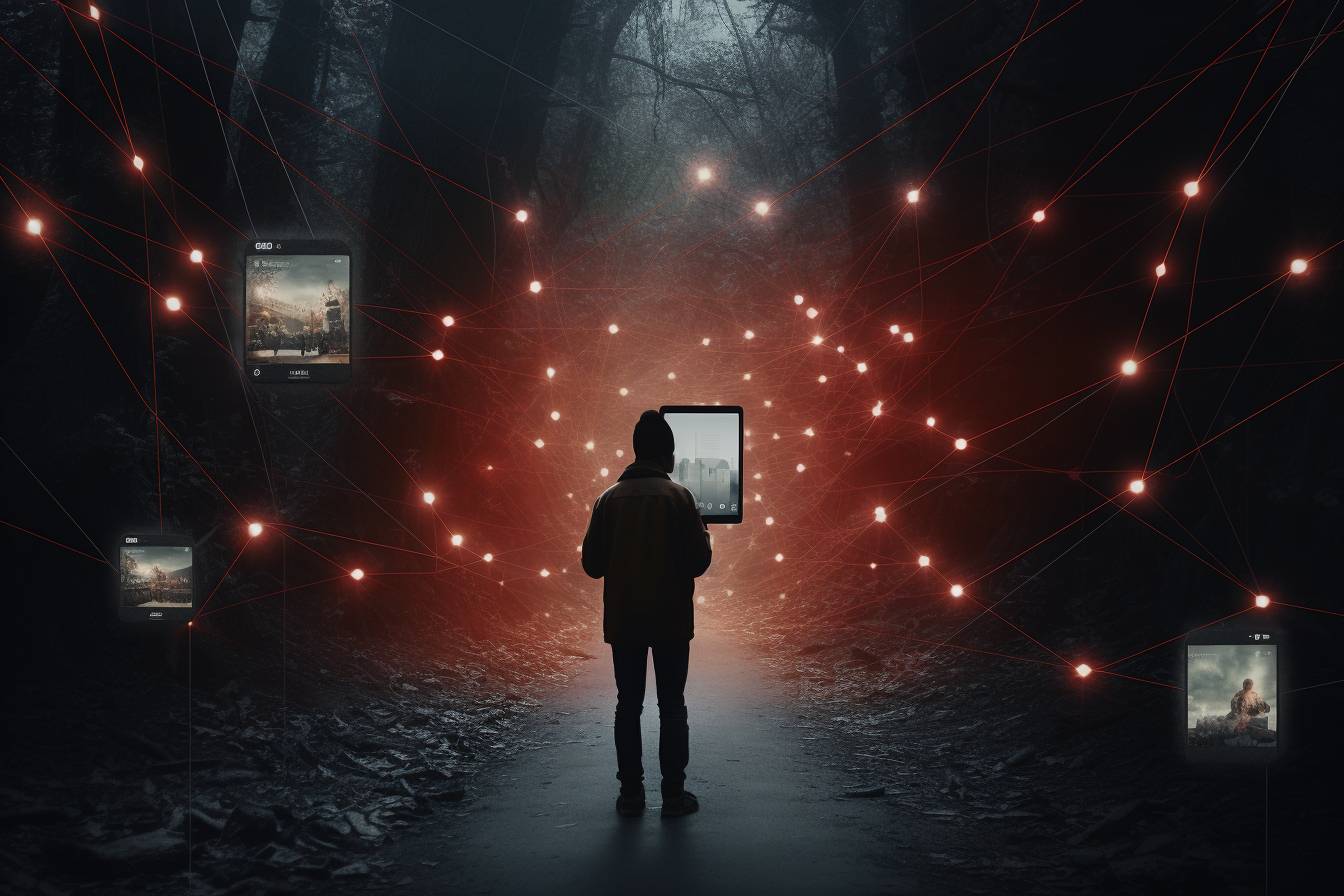

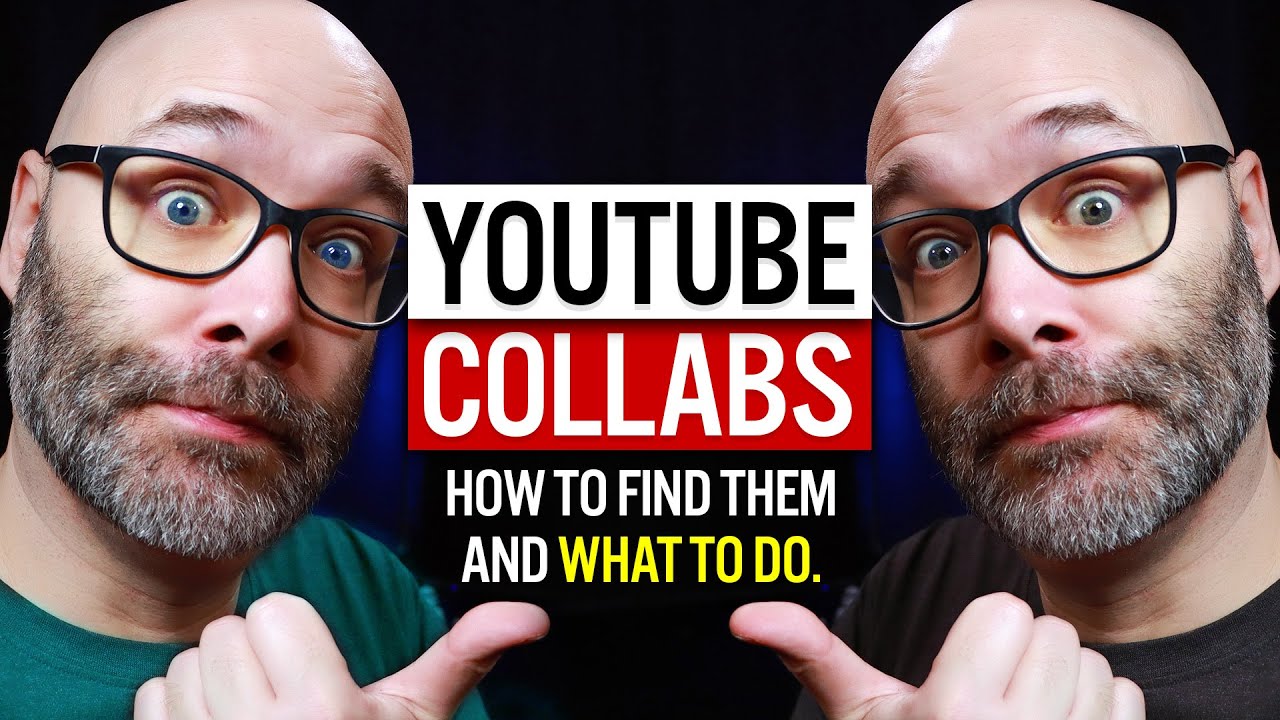 Nimmin Extra
Nimmin Extra
Analyzing a channel's audience and content compatibility
Finding the right collaboration partners on YouTube is essential for creating successful content, as well as growing your channel. In this section, we will discuss how to analyze a channel's audience and content compatibility to identify potential collaboration partners.
Identify your target audience
Analyze potential partners' channel demographics
Once you have a list of potential collaboration partners, begin examining their channel demographics. Some essential YouTube demographics to consider include:
- Age group
- Gender
- Geographical location
These factors can help you determine if a channel has a similar target audience as yours. Look for channels that have an audience that overlaps with your own to ensure your collaboration appeals to both parties' viewers.
Assess content compatibility
Aside from demographics, the content of a potential partner's channel is crucial when considering a collaboration. Take the time to watch their videos to understand their content style, tone, and subject matter. Here are some aspects to consider:
- Video formats (e.g., vlogs, tutorials, reviews, etc.)
- Themes and genres
- Presentation style
- Humor, tone, and language
Choose collaboration partners whose content and style complement your own. You are more likely to produce successful content and appeal to both audiences if both creators' styles align.
Engage with their community
Understanding the communities of potential collaboration partners is essential for a successful partnership. Explore their comment sections, social media presence, and even the types of sponsors they work with. Look for channels with active and engaged communities, as these users are more likely to be receptive to collaborations. Additionally, communities with positive engagement will likely create a more enjoyable collaboration experience.
Check their performance metrics
Performance metrics can be a helpful way to analyze the success and growth potential of a channel. Some metrics to consider include:
- Subscriber count
- Average views per video
- Audience retention rate
- Engagement (likes, comments, and shares)
While a channel's size and performance should not be the sole factor in choosing collaboration partners, it can be essential when negotiating collaborative projects and estimating potential reach.
Engage in networking
Effective networking can help you find YouTubers for collaborations. Attend events, join online forums, and engage in social media communities to connect with creators who align with your content.
When considering a collaboration partner, remember the importance of establishing rapport and trust. Successful collaborations are built on mutual respect and enthusiasm for creating quality content together.
Taking the time to analyze a channel's audience and content compatibility increases your chances of finding a collaboration partner that aligns with your goals and growth. This compatibility can lead to exciting content, increased channel growth, and a stronger community. Keep the above tips in mind while considering potential partners, and don't be afraid to explore a range of creators to find the best match for your channel.
Identifying potential collaborators in your niche
One of the most efficient ways to reach new viewers and grow your YouTube channel is to collaborate with other creators in your niche. Collaboration allows you to pool your skills, knowledge, and audience base, increasing visibility for both parties involved. In this section, we will discuss how to identify potential collaborators in your niche and how to approach them effectively.
Studies show that 61% of YouTube users watch videos from channels they anticipate collaborating with more often than those they don't (source). Moreover, channels that collaborate grow 40% faster than channels that don't (source).
Identifying Collaborators in Your Niche
-
Find channels with a similar target audience: Search for channels that produce content in the same niche as your own. These channels are likely to have an audience interested in the same topics, making them perfect collaboration partners.
-
Analyze their engagement rates: Look for channels with high engagement rates such as high views, likes, and comments. A high engagement rate means that the audience is active and invested in the content, which is ideal for collaboration partners.
-
Ensure compatible values and interests: Identify channels that hold similar values and interests as your own to avoid conflict during the collaboration process.
-
Don't be afraid to look for smaller channels: Often, smaller channels are hungrier for growth and more willing to collaborate.
-
Utilize online resources: Websites like Channel Pages or Tuber Tools can help you find collaboration partners by browsing a directory of YouTubers sorted by niche.
Do's and Don'ts for Identifying Potential Collaborators
| Do's | Don'ts |
|---|---|
| Look for channels with high engagement rates | Don't limit yourself to huge channels |
| Ensure compatible values and interests | Don't partner with channels that have a negative reputation |
| Check their previous collaboration history | Don't rush into a collaboration without proper vetting |
Approaching Potential Collaborators
-
Make a list of potential collaborators: Once you've identified several potential collaborators, create a list with their contact information (email, social media handles, etc.).
-
Engage with their content: Before reaching out, actively engage with their content by liking, commenting, and sharing. This helps build a connection and increases the likelihood of a positive response.
-
Use a personalized approach: When contacting potential collaborators, focus on how the collaboration will benefit both parties and propose specific ideas for videos or projects.
-
Arrange a meeting or video call: If they express interest in collaborating, arrange a meeting or video call to discuss the details further.
Note: It's important to manage expectations during collaboration discussions. Be clear about the goals, deadlines, and responsibilities for each party.
Networking for Collaboration Opportunities
Attending events, meetups, and conferences geared towards YouTubers can help you connect with potential collaborators in person. Additionally, joining online communities and networking groups can also connect you with creators looking to collaborate.
Collaborating with like-minded YouTubers can drive your channel's growth and bring new opportunities for both parties involved. By identifying potential collaborators in your niche, engaging with their content, and building connections with them, you can forge meaningful partnerships that help you reach a wider audience. Don't forget to utilize online resources to find collaborators and ensure your collaboration efforts are successful.
Initiating Contact and Proposing Collaborations
Why Collaborate on YouTube?
Collaborations on YouTube are essential for channel growth and fostering a sense of community within the platform. By partnering with other creators, you can tap into new audiences, share ideas, and learn new techniques.
Statistics on Collaborations:
- Around 47% of top YouTube creators have collaborated with other channels
- Collaborative videos have been shown to have a 33% higher average view count
Finding Collaboration Partners
To initiate successful collaborations, you need to find suitable partners who align with your channel's niche, values, and audience.
- Research Channels Similar to Yours: Look for channels that cater to an audience similar to yours to maximize your chances of enhancing your viewership.
- Engage with Creators in the Community: Participate in forums, groups, and social media networks to connect with creators in your niche.
- Use Keyword Searches: Explore keywords for YouTube in your niche to find channels creating content related to your topics.
- Attend Creator Events: Participate in events and workshops about how to make YouTube videos to meet and connect with potential collaboration partners.
Reaching Out to Collaboration Partners
Initiating contact and proposing collaborations to other creators should be undertaken carefully to ensure a smooth communication process.
Do's
- Be Genuine: Express your admiration for their content and specifically mention which elements inspire you.
- Explain Your Proposal: Clearly describe your collaboration idea and outline how both parties will benefit.
- Add a Personal Touch: Refer to your potential partners' content in your message to make it clear that your proposal is not a template message.
- Share Your Credentials: Include information about your channel, such as links to your work and any achievements that showcase your credibility as a collaboration partner.
Don'ts
- Don't Be Overly Promotional: Avoid focusing solely on the benefits for your channel, as collaborations should be mutually beneficial.
- Don't Be Too Vague: Clearly articulate your collaboration idea, so potential partners understand what you have in mind.
- Don't Use Generic Templates: Ensure that your proposal is personalized and tailored to your potential partner's interests and channel.
- Don't Be Too Persistent: If someone does not respond or declines your offer, respect their decision and avoid pressuring them.
Tracking Collaborations
Keep track of past and ongoing collaborations to measure their success and to foster future partnerships.
- Collaboration Spreadsheet: Maintain a document with information on each collaboration, including the partner, collaboration type, video release date, and any results.
- Post-Mortem Analysis: After a collaboration, analyze its performance and consider whether a follow-up collaboration might be beneficial.
- Follow Up with Your Partner: After a collaboration, share the results with your partner and express gratitude for their participation.
When creating content on YouTube, consider embracing collaborations as a key strategy for growing your channel and generating new ideas. By following these guidelines, you can form lasting partnerships and build a thriving community on the platform.
YouTube Collaborations and Networking
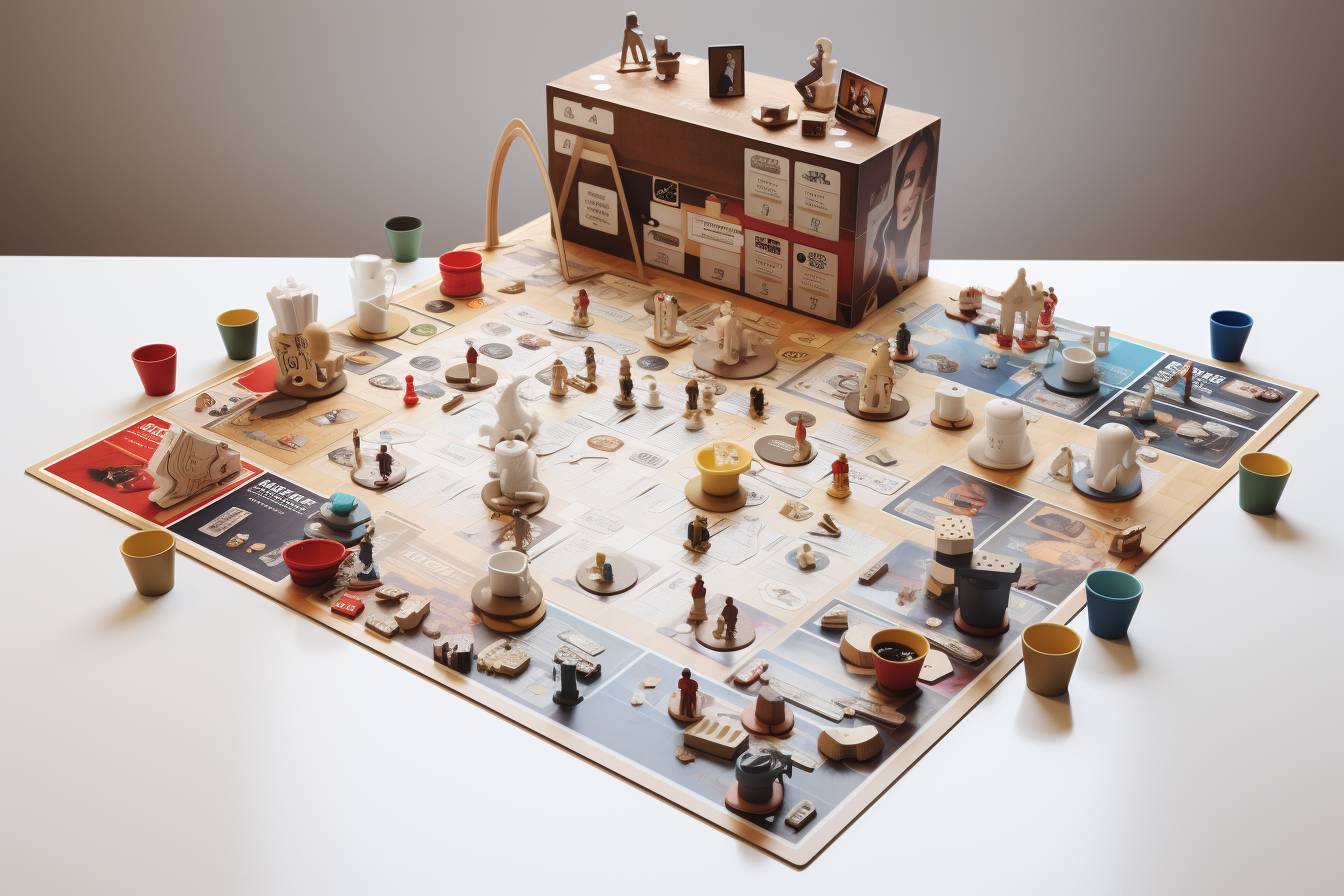
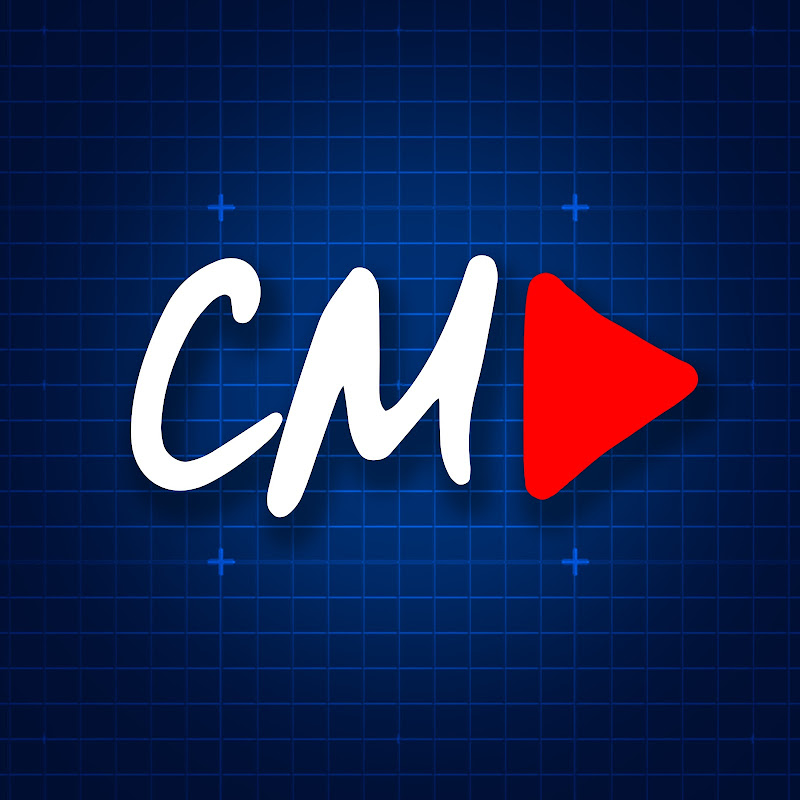
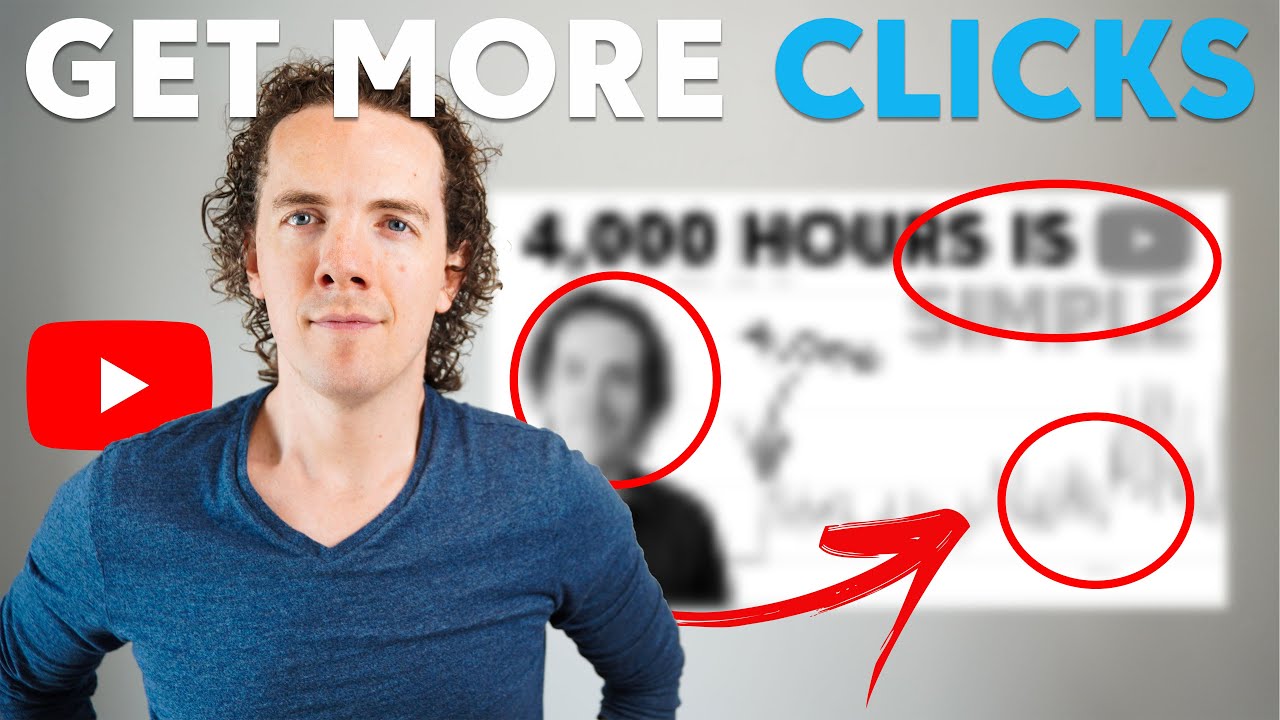 Channel Makers
Channel Makers
YouTube Collaborations and Networking
Collaborating with other YouTubers can be an effective strategy that provides numerous benefits for growing your channel. Some of the top advantages of YouTube collaborations include:
- Audience Expansion: Collaborating with other creators exposes your content to their audience, potentially resulting in more subscribers, views, and engagement on your channel.
- Learning New Skills: Working with other YouTubers can help you learn new techniques, gain inspiration, and improve your content creation skills.
- Higher-quality content: Collaborating allows you to pool resources, expertise, and talent, often resulting in a higher production value than what you may be able to achieve solo.
- Shared Promotion: When you collaborate, both creators have a vested interest in promoting the content, doubling your potential reach.
- Community Building: Collaborations help foster relationships within the YouTube community, leading to a supportive and engaging network of creators and fans.
- PewDiePie and MrBeast: These two popular channels collaborated in a video called "I bought every billboard in my city to do this", which helped PewDiePie gain over 1 million subscribers in a single day.
- Superwoman (Lilly Singh) and The Rock (Dwayne Johnson): Lilly Singh and Dwayne Johnson's collaboration video "How To Be a YouTube Star" has over 14 million views.
- Liza Koshy and David Dobrik: These two creators often collaborated on each other's channels, significantly contributing to each other's growth and success on the platform.
Do's
- Reach out to creators who share your niche, interests, or target audience to improve the chances of a successful collaboration.
- Be genuine and professional in your communication.
- Offer value and unique content ideas for the collaboration.
- Set clear expectations and deadlines for the project.
Don'ts
-
Don't spam or harass creators with collaboration requests.
-
Don't expect instant success or significant growth from a single collaboration.
-
Don't limit yourself to collaborations only with larger channels, as smaller creators can also provide valuable connections and opportunities.
-
Channels that collaborate at least once per month are 2x more likely to have a higher subscriber count compared to those who don't collaborate.
-
In a study that analyzed the collaborations of nine million YouTube creators, successful collaborations resulted in an average 33% increase in views for collaborating channels.
To support your YouTube growth and discover opportunities for collaboration, consider utilizing resources like websites for YouTube creators for the latest creator news and online courses on how to make YouTube videos.
- YouTube Collaborations and Networking
1.2.1. In-Person Collaborations
In this type of collaboration, content creators physically meet and create content together. In-person collaborations are the most authentic and engaging type of collaborations, as the chemistry between creators is more easily visible and tangible. These can be interviews, challenges, vlogs, or even educational content.
Do's: Plan the content in advance, have clear goals, and make sure both creators' audiences can benefit from the collaboration.
Don'ts: Force collaborations for the sake of it, collaborate with someone you're not comfortable with, or fail to give credit.
1.2.2. Distance Collaborations
Distance collaborations involve collaborating with another creator remotely. This can be through video exchanges, live streams, or even written content. Distance collaborations are a great way to diversify and expand your content without having to worry about geographical barriers.
Do's: Set clear expectations, communicate often and effectively, and ensure the collaboration makes sense for your audience.
Don'ts: Neglect the time difference, disrespect the other creator's schedule, or create content that only benefits one creator.
1.2.3. Guest Appearances
Guest appearances can be either in-person or remote collaborations. In this type of collaboration, one creator features another in a small part of their video. This can be a brief cameo, a short segment, or even a shoutout. Guest appearances can also include lending one's voice to narrate a video or providing art for a collaboration.
Do's: Showcase the guest's talent, promote their channel, and make it relevant to your channel's content.
Don'ts: Make it purely promotional, create content that feels forced, or overshadow your guest.
1.2.4. Cross-Promotions
A cross-promotion is a type of collaboration where two or more creators create separate videos that are linked through a common theme or topic. These collaborations are ideal for content creators who cannot physically meet but still want to work together.
Do's: Make sure the collaboration is relevant to both audiences, have clear call-to-actions, and synchronize the posting schedule.
Don'ts: Create content that doesn't align with your channel's values or neglect to mention the other creator's video.
1.2.5. Channel Takeovers
In a channel takeover, one creator temporarily takes control of another creator's channel, usually creating content for that channel or responding to comments. This can be an interesting way to engage viewers, expose them to new creators, and can be a fun way to mix up your content.
Do's: Plan the content in advance, respect the channel's values, and add a unique twist to the content.
Don'ts: Disrespect the channel owner, fail to engage the audience, or ignore the channel's existing content strategy.
1.2.6. Collaborative Projects and Challenges
Collaborative projects and challenges involve multiple creators working together on a larger-scale project, event, or challenge. This can include charity fundraisers, global collaborations, or content creators participating in a trending challenge.
Do's: Set clear goals, communicate effectively with all collaborators, and ensure the project aligns with your channel's values.
Don'ts: Become disorganized, neglect participants' needs, or use the project solely for self-promotion.
Stats:
To improve your YouTube content, consider taking an online course on how to make YouTube videos.
Looking for Brand Deals or Channel Strategy?
We run a platform for brand deals and an agency, helping creators derive maximum value from their content, while offering brands access to unparalleled, best-in-class research.
For Creators
- Strategic Brand Connections
- Outreach to Old Sponsors
- Platform to Manage Brand Deals
- View-Based Contract Negotiation
- Comprehensive Channel Strategy
- Channel/Thumbnail Optimization
For Brands
- Tools to Shortlist Creators
- Targeted Creator Outreach
- Detailed Sponsorship Reports on Existing Brands
- Platform to Manage Creator Deals
- View-Based Deal Facilitation
For Creators
- Strategic Brand Connections
- Outreach to Old Sponsors
- Platform to Manage Brand Deals
- View-Based Contract Negotiation
- Comprehensive Channel Strategy
- Channel/Thumbnail Optimization
For Brands
- Tools to Shortlist Creators
- Targeted Creator Outreach
- Detailed Sponsorship Reports on Existing Brands
- Platform to Manage Creator Deals
- View-Based Deal Facilitation
Apply to work with us or email [email protected]
Featured in this Post
Table of Contents
- Building and Maintaining Collaborative Relationships
- Collaboration Formats and Strategies
- Collaborative YouTube Strategies for Channel Growth
- Finding Collaboration Partners
- Leveraging Social Media and Other Platforms for Networking
- YouTube Collaborations and Networking


¶Social Media Channels and Networking Opportunities
In this section, we'll discuss the different social media channels and networking opportunities that can help enhance your YouTube presence and expand your audience.
5.2.1. Facebook
5.2.2. Twitter
5.2.3. Instagram
5.2.4. TikTok
5.2.5. LinkedIn
5.2.6. Networking Opportunities
Remember that on all these platforms, genuine engagement and interaction with your audience will help you build a loyal following and attract networking opportunities. In addition, learning how to create quality YouTube videos and optimizing your content with an SEO strategy will also contribute significantly to your channel's success.